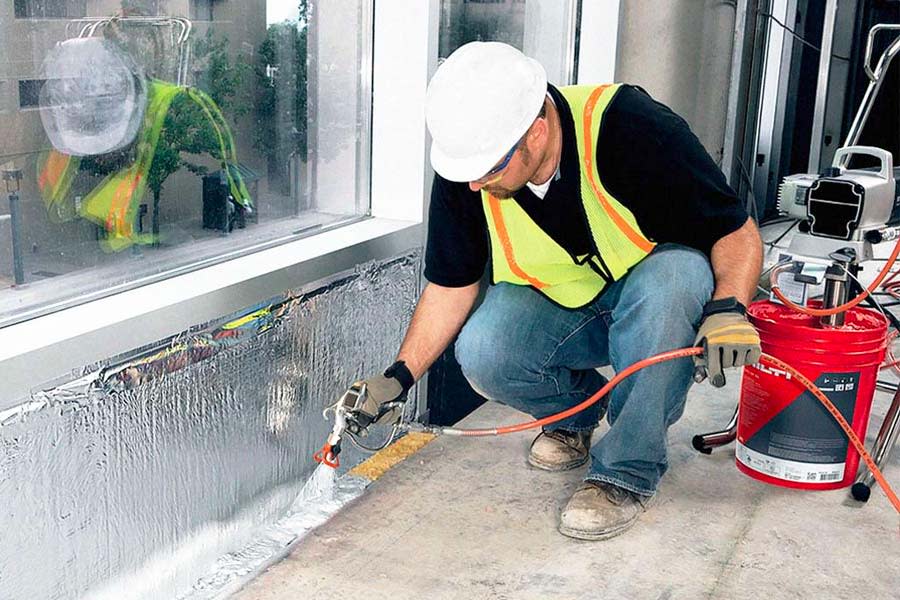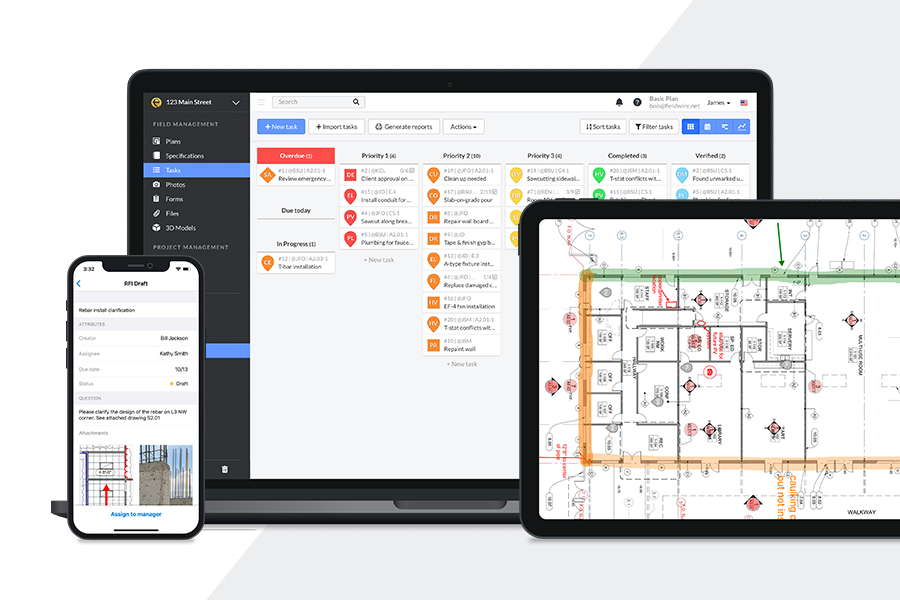How Fieldwire assists with firestop documentation
 Firestop installation is a crucial component of building safety, helping to preserve property and save lives. Proper documentation of firestop systems, particularly in public service buildings, is essential for compliance and safety assurance. Fieldwire simplifies fire protection documentation, allowing users to efficiently document fire protection installations, including type, position, dimensions, and photos, whether online or offline.
Firestop installation is a crucial component of building safety, helping to preserve property and save lives. Proper documentation of firestop systems, particularly in public service buildings, is essential for compliance and safety assurance. Fieldwire simplifies fire protection documentation, allowing users to efficiently document fire protection installations, including type, position, dimensions, and photos, whether online or offline.
Overview
Fieldwire’s task management feature, combined with the ability to generate QR codes and integrate Hilti QR codes (coming in Q2 of 2025), helps make firestop documentation straightforward and organized. This article provides a quick overview of how Fieldwire streamlines firestop documentation.
Key Topics Covered:
-
How to use tasks for fire protection documentation on-site
-
Accessing firestop listings and systems, printing, and assigning of QR codes
-
Generating reports on fire protection installations to share progress with stakeholders
Preparation (office or field – computer or mobile device)
When setting up a firestop documentation workflow in Fieldwire, the process starts with creating a project and uploading plans. Fieldwire’s digital drawing capabilities allow users to pin firestop tasks directly onto project plans, making them easily accessible in the field. The actual documentation of the firestop installation is done through the Task feature, which allows users to log firestop installations for each penetration, keeping all relevant information organized in one place.
Within tasks users can create custom categories in Fieldwire - such as application type, material, or F-rating - and assign locations to improve searchability, especially when managing thousands of firestop tasks. Additionally custom task statuses streamline workflow management by helping to track progress, completed work and approved installations across all firestop applications.
Another important preparation step is to gather the relevant firestop listings for your project and upload them to Fieldwire. Alternatively, you can integrate with the Hilti-managed Google Drive, which provides access to all available firestop listings. This integration ensures that all firestop listings are readily available within Fieldwire, allowing installers to easily attach the correct listing to tasks directly through the Fieldwire app. Detailed setup instructions can be found in our help center.
Good to know: You can open a free Gmail account with your company email by using the business account option during the registration process. This will allow you to access Google Drive features.
Need help? Let’s discuss alternative solutions to ensure seamless access to firestop listings and documentation.
Lastly, Fieldwire allows the attachment of QR codes to firestop applications. These QR codes inform inspectors and maintenance teams about installed systems. Users can generate a QR code for each firestop task, print it, and attach it to the penetration. Soon, Hilti’s preprinted firestop QR code stickers will be available for direct ordering, further streamlining the documentation process.

Installation (in the field – mobile device)
Fieldwire tasks serve as interactive to-do lists that guide installers through firestop installations while documenting each step for progress tracking and reporting. Tasks can include:
-
Photos (before/after, progress updates)
-
Real-time communication between field teams and office staff
-
Progress tracking and status updates
-
Attached documents for reference or reporting
A key enhancement for firestop documentation is the ability to create custom task attributes. This allows users to add specific details - such as UL listings, penetration orientation, or other unique identifiers - to accurately record and track each firestop task.
To ensure thorough documentation, checklist templates can be created and assigned to tasks. These templates function as step-by-step guides, ensuring installers follow company standards and capture all necessary data.

Reporting
Once firestop installations are complete or at interim stages, Fieldwire enables seamless report generation. Reports are available in PDF or CSV formats and can be automated for recurring distribution to key stakeholders.
Users can establish report templates that capture field data aligned with project objectives. These templates allow for one-time report generation or scheduled recurring reporting, ensuring transparency and streamlined communication.
At the conclusion of a project, a final report can be generated detailing all firestop locations, including the systems and EJs used on the job, which can then be provided to the owner. Alternatively, the installing contractor can transfer the Fieldwire project to the owner, allowing them to retain digital access to the information.
Summary
Using Fieldwire tasks to document firestop installations is an effective way to streamline your firestop installation process and generate detailed reports. Additionally, creating a project template with predefined categories, checklists, statuses, and task attributes ensures consistency across all firestop projects, improving efficiency and compliance.
Ultimately Fieldwire helps simplify firestop documentation, making compliance and reporting easier than ever before.
Additional resources
Want to learn more about using Fieldwire for firestop installation? Explore use cases and relevant webinars on the Firestop Use Case page.

 Angela Nepa •
Angela Nepa • 


















